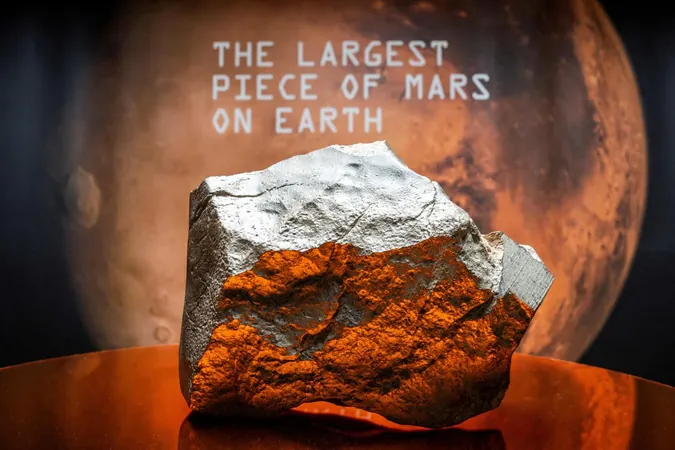
Astronomers Uncover Hundreds of Potential Supergiant Stars in Andromeda and Triangulum Galaxies!
2024-11-04
Author: Wei
Astronomers Uncover Hundreds of Potential Supergiant Stars in Andromeda and Triangulum Galaxies!
In a groundbreaking study published on October 25, astronomers using the Large Sky Area Multi-Object Fiber Spectroscopic Telescope (LAMOST) have identified nearly 300 candidate supergiant stars in the nearby Andromeda and Triangulum galaxies. This remarkable discovery sheds light on the elusive and massive stars that play a pivotal role in our understanding of the universe's stellar evolution.
Supergiant stars, which are massive and luminous, evolve from the main-sequence phase of stellar life and offer crucial insights into the dynamics of star formation and development. However, their study is often hampered by their considerable distances, their tendency to form in complex binary or multiple systems, and their association with dense clouds of interstellar material, making observations a challenging endeavor.
Led by Hao Wu from Peking University, a team of scientists conducted this comprehensive survey targeting supergiants specifically within the Local Group of galaxies. Their efforts yielded a new catalog of supergiant candidates, which is essential for refining theoretical models of stellar evolution—crucial for advancing our understanding of the universe.
The astronomers successfully cataloged 199 supergiant stars in the Andromeda galaxy (Messier 31) and 84 in the Triangulum galaxy (Messier 33). Impressively, around 84% of the candidates from Andromeda have passed independent verification checks, indicating a high accuracy rate for these celestial giants. In contrast, only about 67% of the Triangulum candidates met similar criteria.
The newly identified supergiants include a mix of types characterized by varying colors and temperatures: in Andromeda, there are 134 yellow supergiants (YSGs), 62 blue supergiants (BSGs), and three red supergiants (RSGs). The Triangulum galaxy hosts 53 YSGs, 28 BSGs, and, like Andromeda, three RSGs.
Among these luminaries, the heaviest is a star located in Andromeda, designated LAMOST J0043+4124, boasting an eye-watering mass of over 40 solar masses—the equivalent of over 40 suns! This remarkable find not only highlights the vast range of stellar masses in our cosmic neighborhood but also offers fertile ground for future research on stellar life cycles.
The authors emphasized the significance of their findings, declaring: "This is one of the largest supergiant samples from the M31/M33 region, with comprehensive optical data. Such a resource is invaluable for exploring star formation and stellar evolution across different cosmic environments."
As astronomers continue to probe the mysteries of the universe, this new catalog promises to unlock more secrets about these titans of the cosmos. Are we on the brink of discovering even more supergiants hiding in the vastness of space? Stay tuned for what the stars have in store!




 Brasil (PT)
Brasil (PT)
 Canada (EN)
Canada (EN)
 Chile (ES)
Chile (ES)
 Česko (CS)
Česko (CS)
 대한민국 (KO)
대한민국 (KO)
 España (ES)
España (ES)
 France (FR)
France (FR)
 Hong Kong (EN)
Hong Kong (EN)
 Italia (IT)
Italia (IT)
 日本 (JA)
日本 (JA)
 Magyarország (HU)
Magyarország (HU)
 Norge (NO)
Norge (NO)
 Polska (PL)
Polska (PL)
 Schweiz (DE)
Schweiz (DE)
 Singapore (EN)
Singapore (EN)
 Sverige (SV)
Sverige (SV)
 Suomi (FI)
Suomi (FI)
 Türkiye (TR)
Türkiye (TR)
 الإمارات العربية المتحدة (AR)
الإمارات العربية المتحدة (AR)